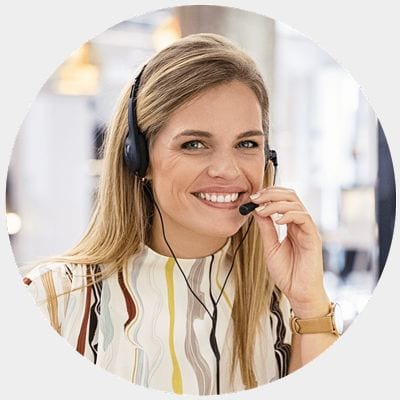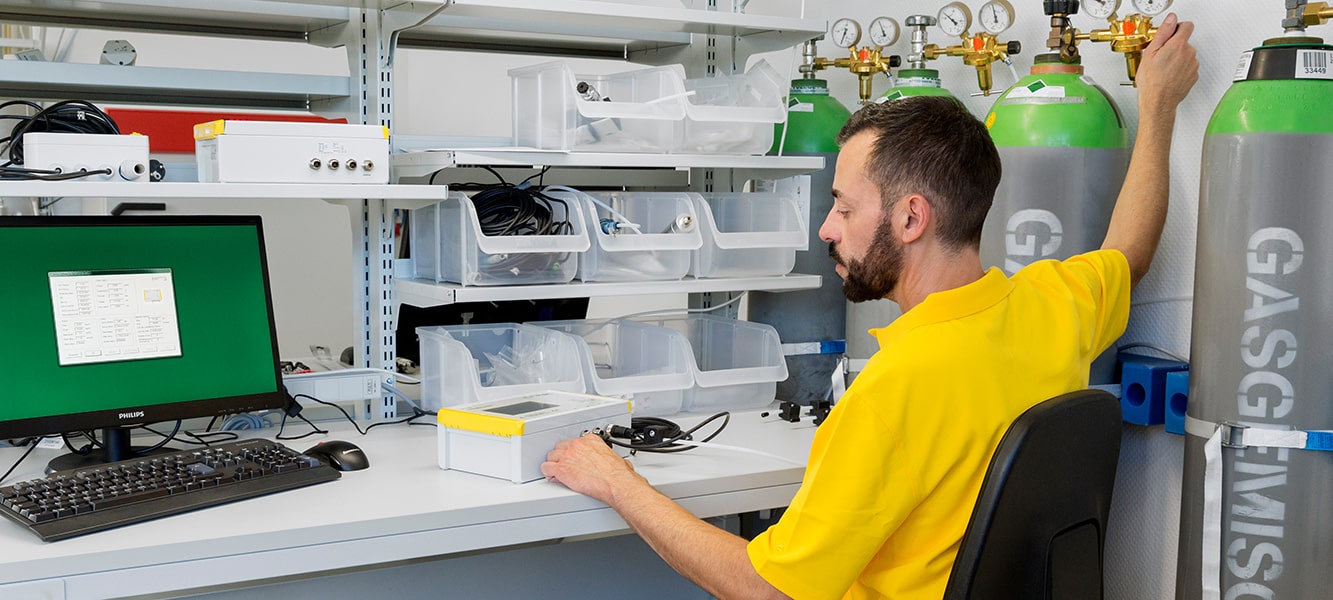
(Re-)Calibration of Measuring Sensors
The field of compressed air, gas, and liquid monitoring applications carries significant risks, with little room for error. Precise measurement and monitoring of these essential parameters are critical for a number of reasons, including safe products and industrial process optimization. But the inevitable question is:
How can we be sure that our measurements are reliable in addition to being accurate?
The answer lies in the meticulous and essential process of calibration. The precision and dependability of measuring instruments are largely dependent on calibration. Safeguarding the integrity of the measurements in crucial applications in various industries is a critical practice that bridges the gap between raw data and actionable insights.
Why Are (Re-)Calibrations Required?
-
Accuracy Assurance: By identifying and resolving drift brought on by environmental conditions, routine calibration preserves instrument accuracy. This guarantees precise measurements.
-
Regulatory Adherence: To meet regulations, such as the Good Manufacturing Practices (GMP) in the pharmaceutical industry, many industries need calibrated instruments. Costly fines and penalties are avoided through calibration.
-
Quality Control: Accurate measurements and consistent production are made possible by calibration, which is a crucial component of quality control.
-
Safety: Accurate readings are ensured by calibrating instruments used in safety-critical processes, such as pressure gauges in gas pipelines, which lowers safety risks.
-
Cost savings: By addressing equipment issues early to prevent larger problems, routine calibration reduces the need for expensive production errors, retests, and adjustments.
-
Environmental & Operational Factors: Uncontrollable environmental and operational conditions, such as temperature fluctuations and environmental changes, can affect instrument accuracy over time. Regular calibration helps counter these influences, providing reliable measurements despite external challenges.
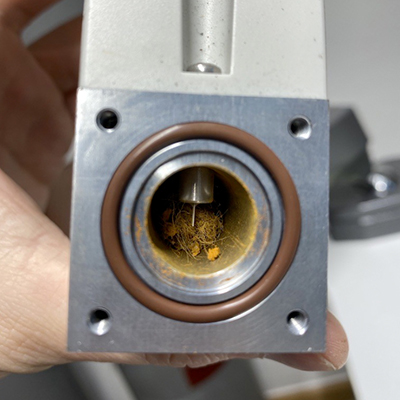
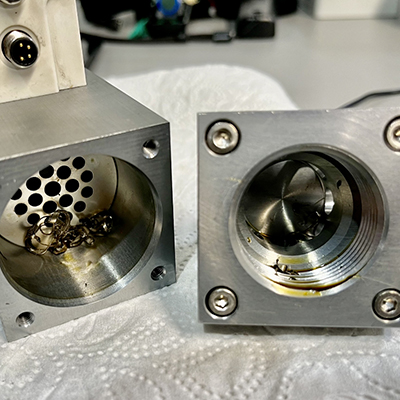
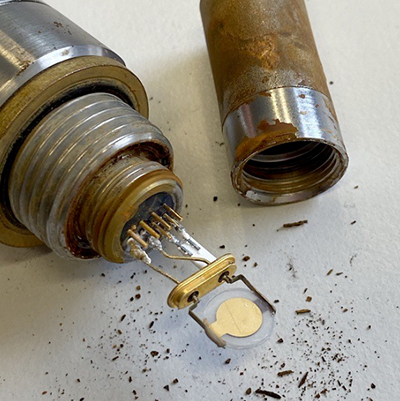
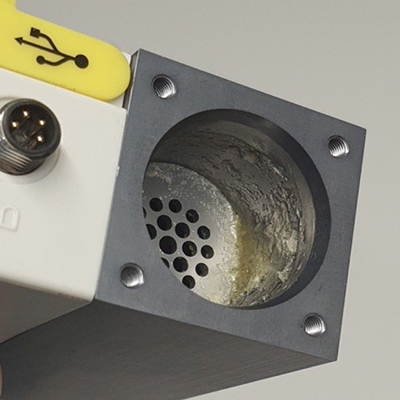
When Should You Calibrate Your Sensor?
- Recommended at least once per year, unless otherwise stated:
- S120 Oil Vapor Analyzer: once per year or 6000 hours
- O²,CO² and CO sensors in S605 & S606 – reference gas calibration once per year and replacement every 24 months
- When there is doubt about the accuracy of results
- When there has been high contamination or faults in the system, the sensor is installed
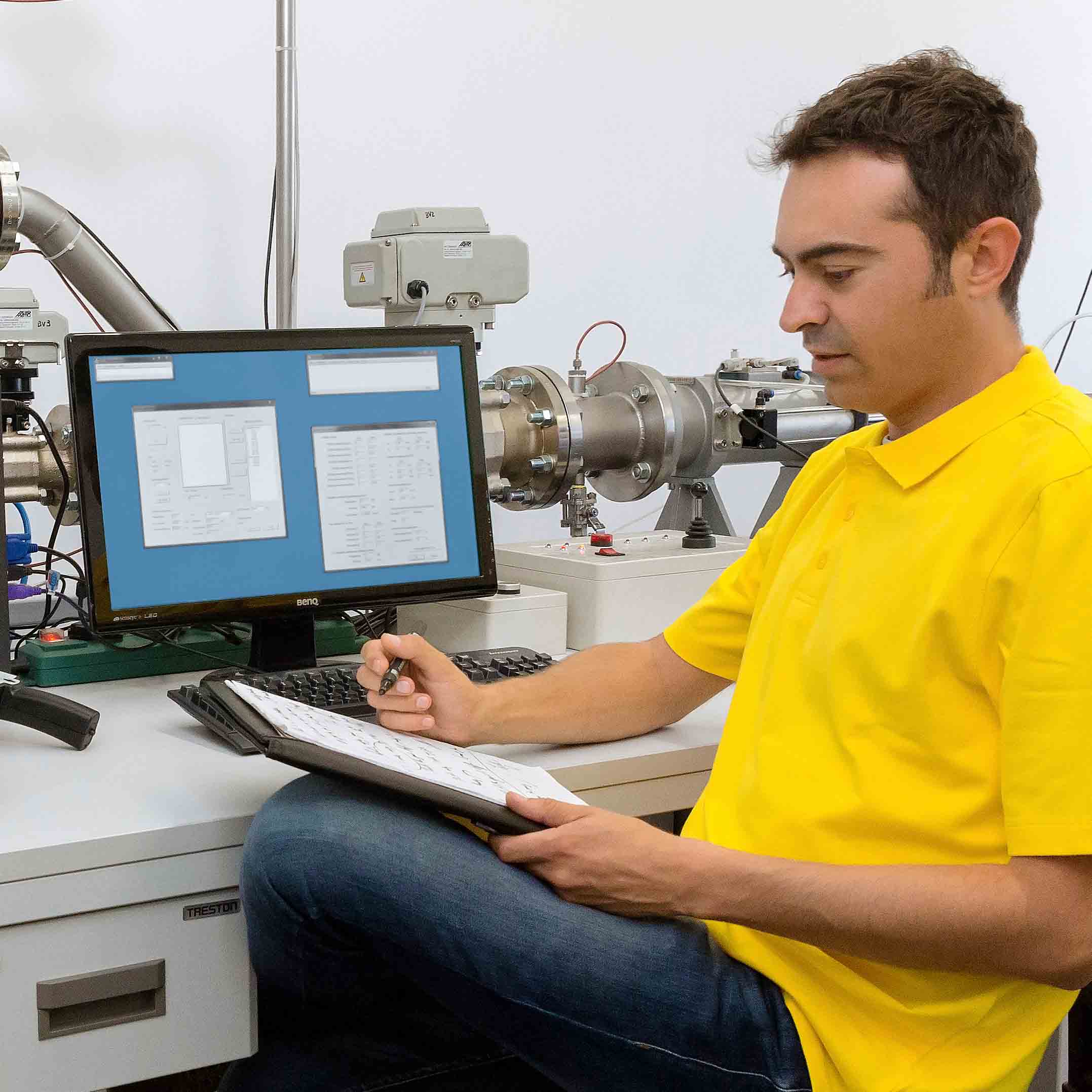
Calibration Service Process at SUTO iTEC
SUTO iTEC’s calibration service is a complete process, from cleaning the sensors through precise testing and operational capability of all components to restoring the precision of the sensors.
1. Customer Sends Sensor
- Fill out an RMA form, send copy in email and add printed copy inside the package with sensors
- Add all the details of the sensor, such as the model number, serial number, etc.
- Add details of work to be carried out (Calibrations, repairs, output exchange, etc.)
- Ensure packaging is safe and secure for the sensors or transport cases
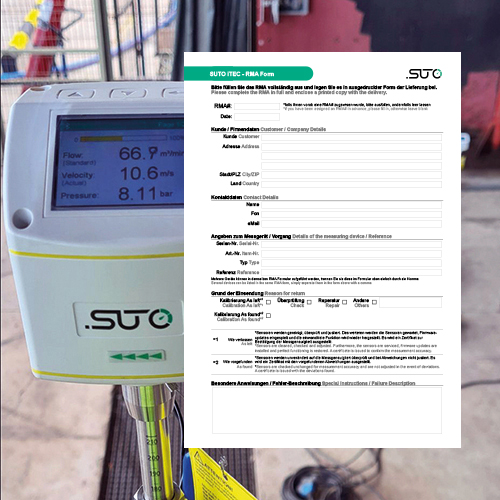
2. Sensor Arrival
- Sensors are received, and service income document created and sent to client
- Sensors are handed over to our calibration technician for pre-inspection
- A general visual inspection done
- If any defect is reported, these are tested and/or fixed
- If damaged on the client side, a quote is created. Otherwise, repaired under warranty
- The sensor is handed over to the relevant calibrations division
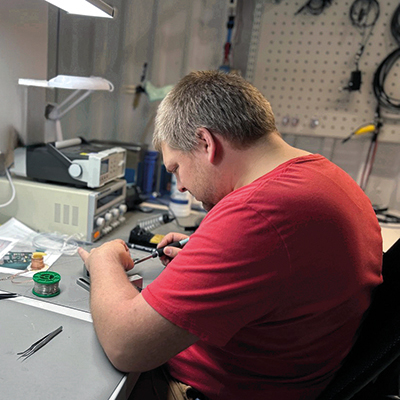
3.1 Calibration Station as Found*
-
Sensors are connected to the calibration system and verified against the acceptable parameters.
-
Certificates with a report are created and sent to clients
* As found – nothing is done to the sensor in terms of cleaning or replacing parts or filters. We receive the sensor and test/verify the values. A certificate is created and provided to client
3.2 Calibration Station as Left*
-
Sensors are cleaned
-
Wiring and connectors inspected for damage
-
Sensors are connected and inspected for leaks
-
Firmware and software updates are done if required and client settings are saved.
-
Calibration is performed using the calibration software
-
The software is fully automated (no human error)
-
Adjustments are done automatically and shown after calibration, so technician can verify the calibration points. Calibration is done using the calibration software
-
- If it fails, the customer is notified and further actions are taken (quote for replacement or repairs, etc.)
- Client settings are reinstalled on the device
- Certificates are created and the sensor is sent for final test
* As Left – sensor goes through our full service and calibration procedure. The sensor is re-calibrated and certified.
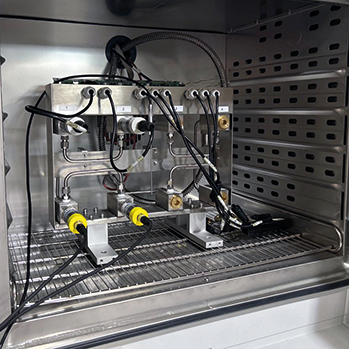
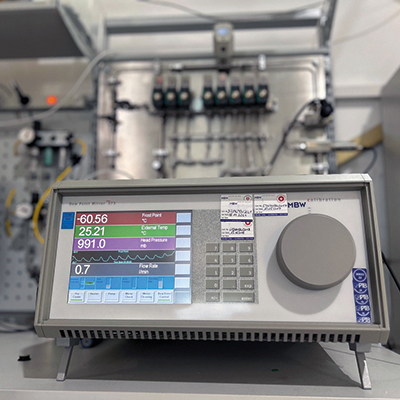
4. After Calibration (Final Test)
- Sensor go through final testing after calibration
- Signal outputs are tested
- Labels are inspected
- General electronics are tested (Bluetooth, power supply, etc.)
- Displays are inspected
- Final visual inspection
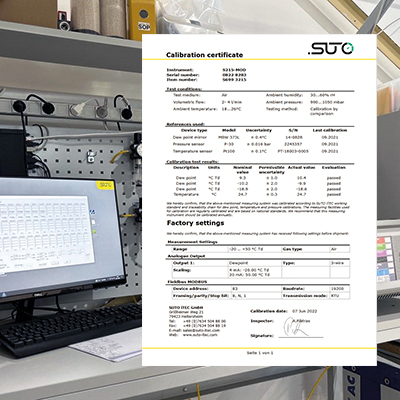
5. Packing and Shipping
- Sensors are packaged for safe return
- Certificates are checked for any errors
- All components checked that nothing is missing
- Invoice and shipping labels if required are printed and issued
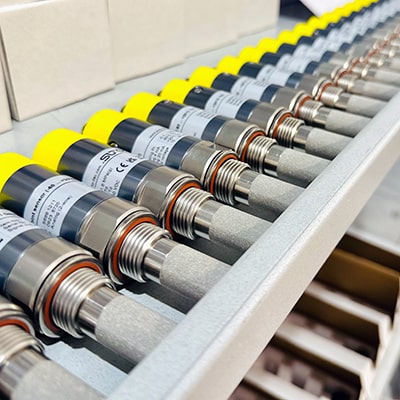
SUTO Exchange Calibration Service
Do you want to get rid of downtimes, forth and back shipments and additional overhead, due to sensor recalibration? SUTO is offering an efficient customer-orientated Exchange Calibration Service to simplify sensor recalibration.
- No sensor downtime
- Cost reduction
- Constant reliable measurement
- Fresh calibration certificate
- Seamless calibration recording
Products from the following categories are included in the SUTO Exchange Calibration Service:
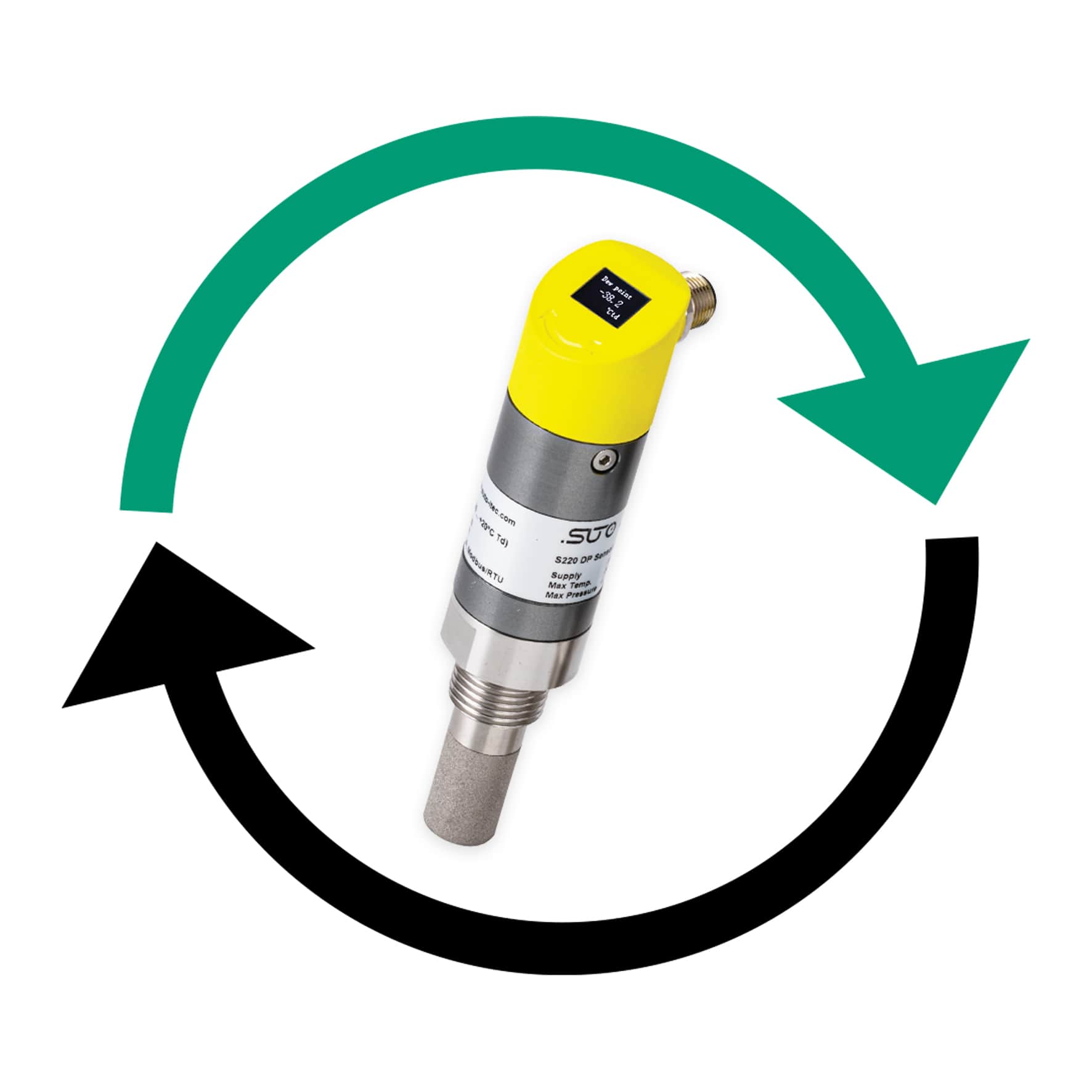
Beyond Calibration: Including Expert Cleaning and Inspection
The calibration process at SUTO iTEC ensures unparalleled accuracy for your instruments. With expert cleaning and inspection included, you will experience benefits such as:
-
Reliable accuracy: Confidence in accurate measurements for critical applications.
-
Efficient maintenance: Streamlined procedures minimize downtime and ensure instruments are back in operation quickly.
-
Extended life: Thorough cleaning and inspection extends instrument life, maximizing your investment.
-
Compliance Assurance: Adhere to industry standards and meet the most stringent quality and compliance criteria.
-
Customized Solutions: Tailored calibration to unique instrument specifications, providing a precise fit for your needs.
-
Transparent reporting: Receive detailed reports for a clear understanding of calibration results.

